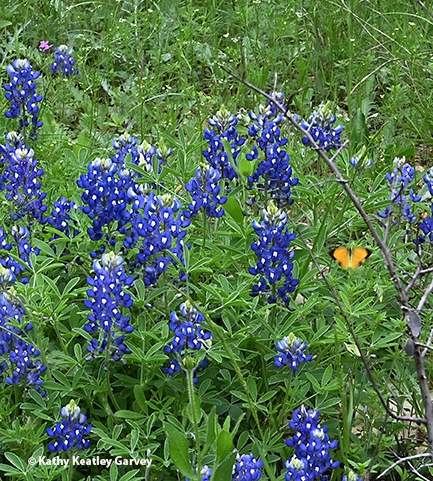
The Wildflower Center, the state's botanical garden and arboretum, showcases bluebonnets, lots of bluebonnets. You'll see scores of other floral species, too, and maybe....well, rattlesnakes. You're told that "Fire ants, poison ivy, cacti and snakes are probable in this natural environment."
You're in Texas, after all.
At the entrance to the courtyard, you may spot Athena, the Wildflower Center's resident great-horned owl (Bubo virginianus) nesting there, and you may see her mate.
There are rules (etiquette and policies). "The Eyes of Texas" are upon you. No pets (service animals only). No open-carry guns. No drones. No smoking. No outside alcohol. No bicycles, scooters, balloons, confetti or glitter.
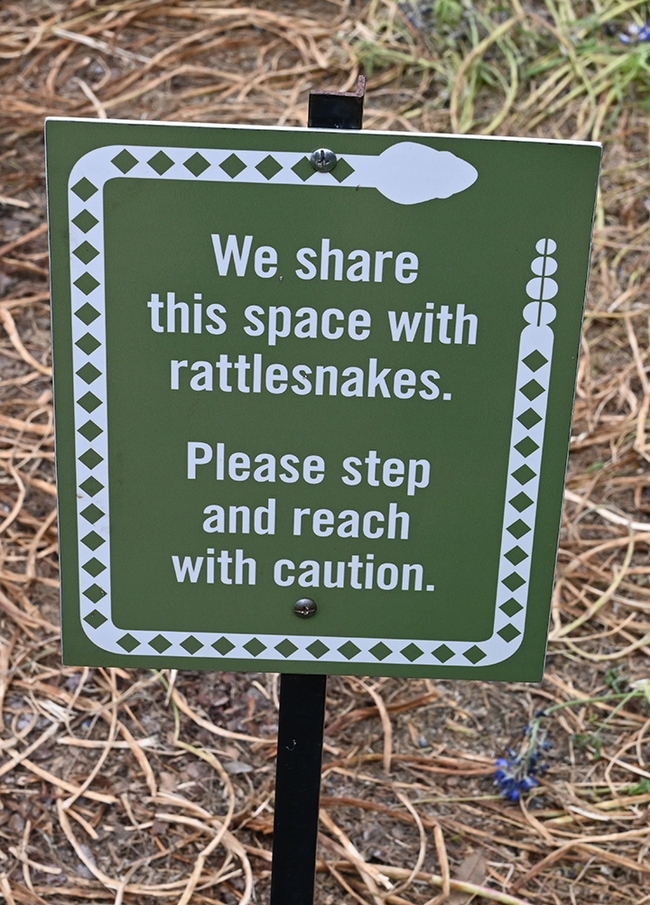
What kind of wildlife will you see? Well, besides the rattlers and the owls, you may spot hummingbirds, bees, butterflies, roadrunners, rabbits, squirrels, turtles, scorpions, and more. "In every case, please be aware of your surroundings and respect these wild creatures' space."
You must follow photo and video policies as well. If you want to capture images of the butterflies, be sure to take a long macro lens (which I didn't do), as the butterflies always seem to be fluttering 20 feet away from you and your camera.
The rules enable ALL visitors to enjoy the wildflower center, and an opportunity to see the nearly 900 species of Texas native plants.
But ah, the bluebonnets...The butterflies...Nature at its finest.
Entomologist Mike Quinn, curatorial associate, University of Texas, relates on the Wildflower Center website that the butterfly species include:
- Little yellows (Pyrisitialisa)
- Sleepy orange (Abaeis nicippe)
- Southern dogface (Zerene cesonia)
- Cloudless sulphur (Phoebis sennae)
Also of entomological interest is a sign depicting insects and their habitat that asks: "Who's been here?" Images feature a chewed leaf, rolled leaf, leaf galls, a spittlebug and a leaf miner. The text includes:
- "This is a chewed leaf. There are different insects that like to eat leaves. Caterpillars and grasshoppers are just a couple that love eating leaves."
- "This is a rolled leaf. The insect has wrapped a leaf around itself for protection and also so it can eat the leaf without being seen by predators. A leaf-rolling weevil likes to eat oak leaves."
But ah, the bluebonnets...The butterflies...Nature at its finest.
As Lady Bird Johnson said at a speech at Yale University on Oct. 9, 1967: "The environment is where we all meet, where we all have a mutual interest; it is the one thing all of us share. It is not only a mirror of ourselves, but a focusing lens on what we can become."
Attached Images:
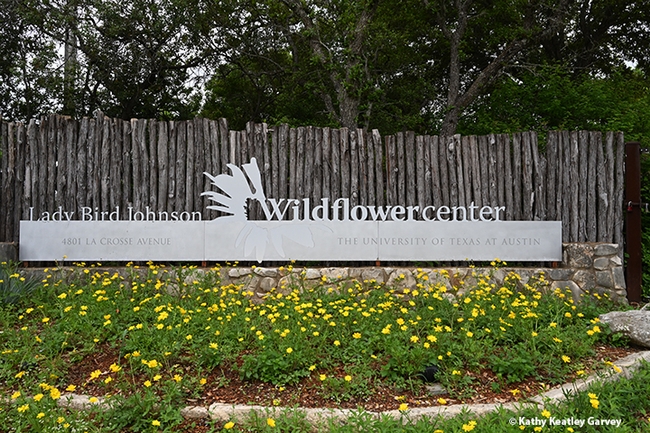
Signage at the 284-acre Lady Bird Johnson Wildflower Center at the University of Texas, Austin, welcomes visitors. (Photo by Kathy Keatley Garvey)
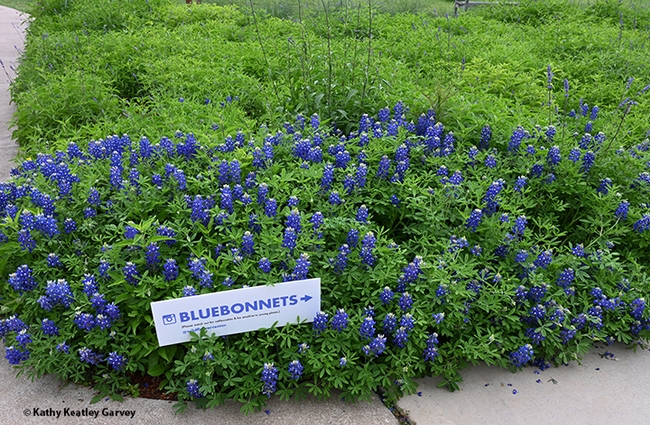
A bluebonnet sign warns visitors of rattlesnakes. (Photo by Kathy Keatley Garvey)
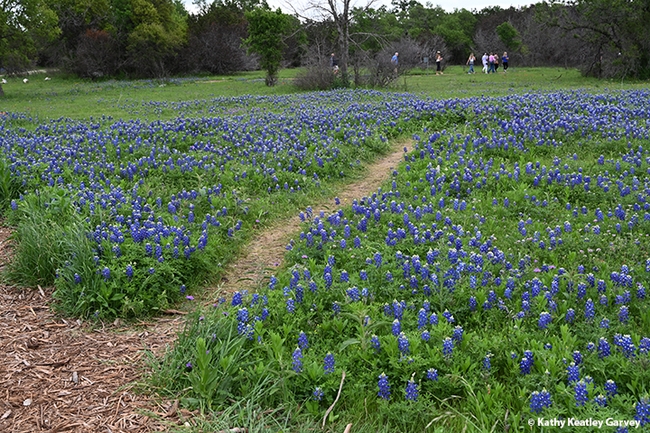
Visitors are to stay on the path at the Lady Bird Johnson Wildlower Center. This image was taken on Easter Sunday. (Photo by Kathy Keatley Garvey)
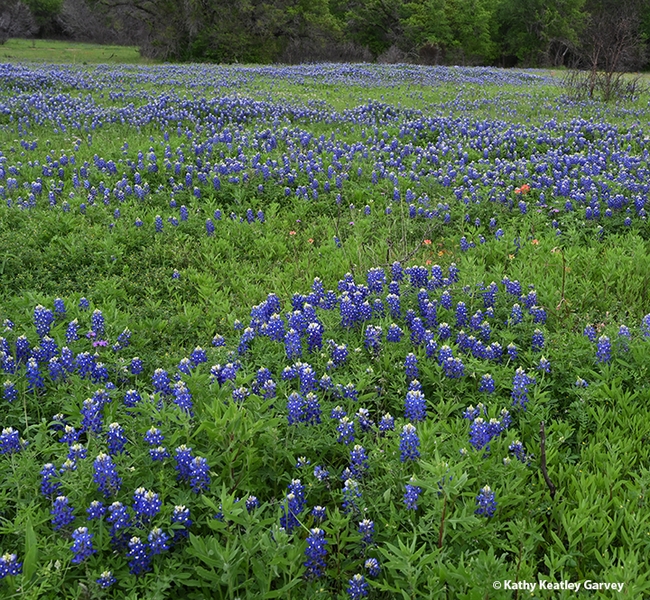
The bluebonnets were spectacular on Easter Sunday. (Photo by Kathy Keatley Garvey)